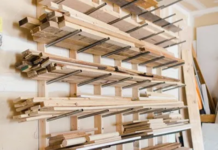For good reason, putting in new roofing is one of the largest — and most significant — projects in the home repair business. Because your roof is just what shields you from the elements, it must be in excellent condition. However, the expense of building new roofing is considerable. You don’t want to entrust it to just anybody because it’s such a crucial and costly task.
To be a roofing company, no official schooling is necessary, and the majority of roofing professionals learn on the job. The licensing requirements differ from place to place. Some countries, provinces, and territories require a contractor to have a license in order to work on every job, whereas others have additional requirements.
Roofing contractors should also:
Liability insurance is required.
Have a valid business license.
Be a partner.
Provide a quotation if possible.
Be prepared to supply three references at the very least.
Professional roofers may do a normal roof check, for example.
Roofing companies may do anything from a regular roof assessment and estimate to completely replacing a roof. Irish Roofers, for example, will provide a detailed estimate for any type of roof repair or replacement, regardless of the material being replaced or repaired.
Other services that may be provided include:
Replacing joists or plywood that has been damaged
Putting in insulation
Ventilation system installation
Creating a waterproof roof
Debris removal from roofs
Performing routine maintenance
Roofing repairs
Infrared scans are used to evaluate if roofing is leaking.
Other forms of roof inspections are also available.
The Difference Between Hiring A Roofing Company And Hiring A Roofer
Roofing contractors might work on their own or as part of a roofing company. While each has its advantages and disadvantages, skilled roofers may be found in both roles.
What qualities would I look for in a roofing contractor?
Your project’s experience and the stuff you’ve chosen. Insurance and proper licenses are required.
When choosing a roofer, what queries should I ask?
Follow this questionnaire to ask when choosing a roofer to acquire the correct information from possible contractors.
How often would I require the services of a dependable roofer?
If you can undertake basic maintenance (e.g. downspout cleaning, debris removal), you may only need to engage a professional roofer for restorations or replacement. This time span might be anything from several years to decades.
The Most Common Causes
Strong winds and hail, for example, might harm your shingles whether directly or indirectly by pushing down dead and decaying branches from surrounding trees. Shingles don’t last indefinitely. They are normally covered by a warranty of 15 to 50 years. They become increasingly susceptible to weather harm as they get older.
Shingles that are missing– Shingles have a wind rating. In most cases, the type on the house surpasses the local weather standards. Even so, a shingle can be ripped off by the wind, allowing fluid to infiltrate your home. Shingles that are cracked or damaged — Any sort of material can be broken by overhanging branches or hail. Trim your trees and get ones with a higher hail rating.
Gaps – Gaps can emerge around flashing as a result of aging, wood expansion, and settling.
Broken or Old Flashing — Replace any broken or worn flashing, as well as any sealants.
Inspections of the Roof
An examination should be performed despite the age of your roof or perhaps the source of a leak. A leak might be an indicator of other hidden or underlying problems, such as faulty installation or structural problems. This can result in more leaks and more expensive damage. A roof check costs around $200, which is far less than the cost of a repair.
Do I give roofing contractors a gratuity for their work?
Roofers charge an hourly cost of $40 to $60 an hour for their services as professional contractors. Tipping is not customary.
Are you looking for a trustworthy roofer in your area?
If your rooftop is old, obsolete, or in need of repairs, you’ll want to hire a professional to take care of it. You can find the ideal contractor for your needs by researching different firms and receiving a few quotations.
This section will walk you through the process of locating the source. Some procedures need the presence of two individuals as well as access to the roof and attic. If you’re having trouble completing any of these tasks securely, get expert help. It’s difficult to pinpoint the specific site of a leak.
Finding the exact site of a leak isn’t always as simple as it seems, especially on sloped roofs. Leaks are more likely to be found higher up than the evident interior leak. Water enters the house through the shingles, continues down the beams or sheathing, and eventually finds a nail or projection to direct the stream of water toward your ceiling. It may pool and produce drooping or bulging, or it may move further, draining through light fittings or other holes.
The tools you’ll need to figure out what’s causing the problem are listed below.
If it’s not raining, you need a helper, a ladder, and a garden hose. A tape measure, dust mask, and flashlight are also necessary. Allow only one person to enter the attic. Make use of a dust mask. Find a place where there is water. Allow only one person to enter the attic. Make use of a dust mask. Find the source of the water seeping through your ceiling. Move any exposed 5fiberglass insulation to the side.
When dealing with fiberglass insulation, use sleeves, a face shield, and gloves to avoid itching and irritation. Read more about the hazards of fiberglass insulation here. Examine the area for signs of water damage. Examine the sheathing extending to the roof’s peak upward from the ceiling leak location. It may not be a straight line, but it has always been just above the source of the ceiling leak.
Using a hose, spray water on the exterior. Ascend to the roof and sprinkle water over the probable leak area with one person. It’s possible that you’ll have to do this for a few moments before you discover it. Be sure to mark the area of water intrusion once you locate it so you don’t have to do the leak locating again.











